Giardia in Dogs – TL;DR
- What it is: Giardia is a common gut parasite that can upset your dog’s digestion and overall health.
- How dogs catch it: They often get it from drinking contaminated water, contact with other dogs, or exploring dirty areas.
- Watch for: Diarrhea, mucus in their stool, vomiting, and low energy, especially in puppies.
- Vet diagnosis: Multiple stool tests, like fecal flotation or ELISA, help confirm infection since Giardia can shed intermittently.
- Effective treatment: Prescription meds, hydration, and a gentle diet usually clear the infection when paired with good hygiene.
- Worth noting: Some strains can spread to humans, so keeping things clean protects the whole household.
- Prevention first: Clean water, quick poop cleanup, regular baths, and routine vet visits greatly reduce risk.
- Why it matters: Early care not only protects your dog from discomfort but also keeps your family safe from possible cross-infection.
Have questions? We can guide you with the right prevention plan and treatment steps to keep your dog healthy and happy.
Dogs are curious by nature, and while exploring is fun, it can sometimes put them at risk for health issues. One of the most common intestinal parasites they can pick up is Giardia, a microscopic organism that affects the small intestine and can cause uncomfortable digestive issues.
What makes Giardia extra worrying is that it’s not just a problem for dogs; it can spread to humans, too, putting the whole household at risk. Understanding how Giardia spreads, its symptoms, and ways to prevent it is key to keeping both pets and people safe. Keep reading to learn more about Giardia, how it spreads, and what you can do to keep both your dog and your family safe.
What is Giardia in Dogs?
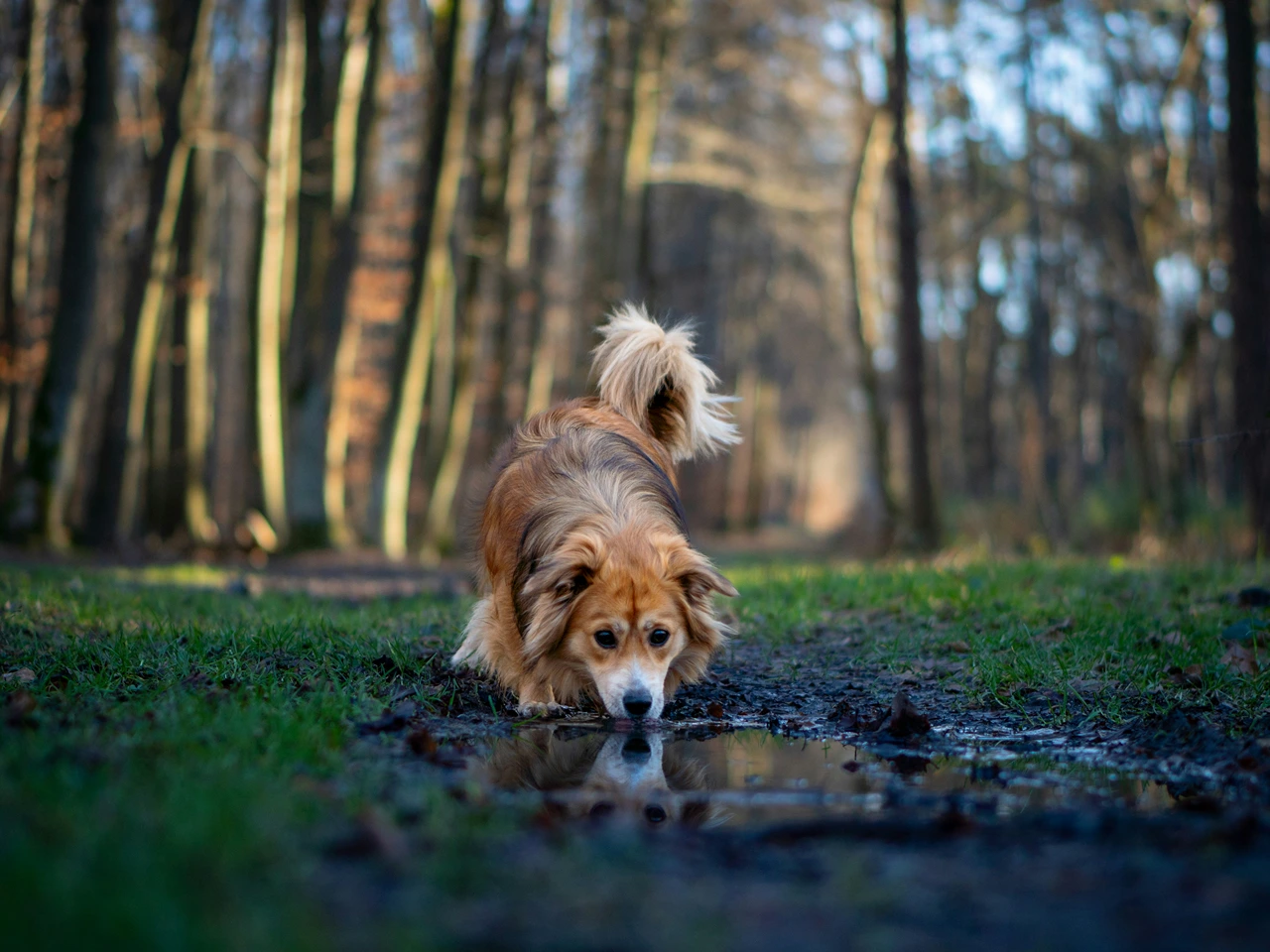
Giardia is a single-celled protozoan parasite that infects the small intestine of dogs and other animals. This intestinal parasite has two forms: trophozoites, which are active and feed in the intestine, and cysts, which are hardy and can survive in the environment for long periods.
Many dogs with Giardia might show symptoms only sometimes, or not at all, which can make it hard for vets to spot. Dogs can catch Giardia from areas where other animals have gone, dirty soil, or drinking water that isn’t clean. It’s usually more common in the warmer months or in places with standing water, and can survive in the environment for weeks, which makes it easier for dogs to pick it up and spread it.
How Dogs Get Giardia
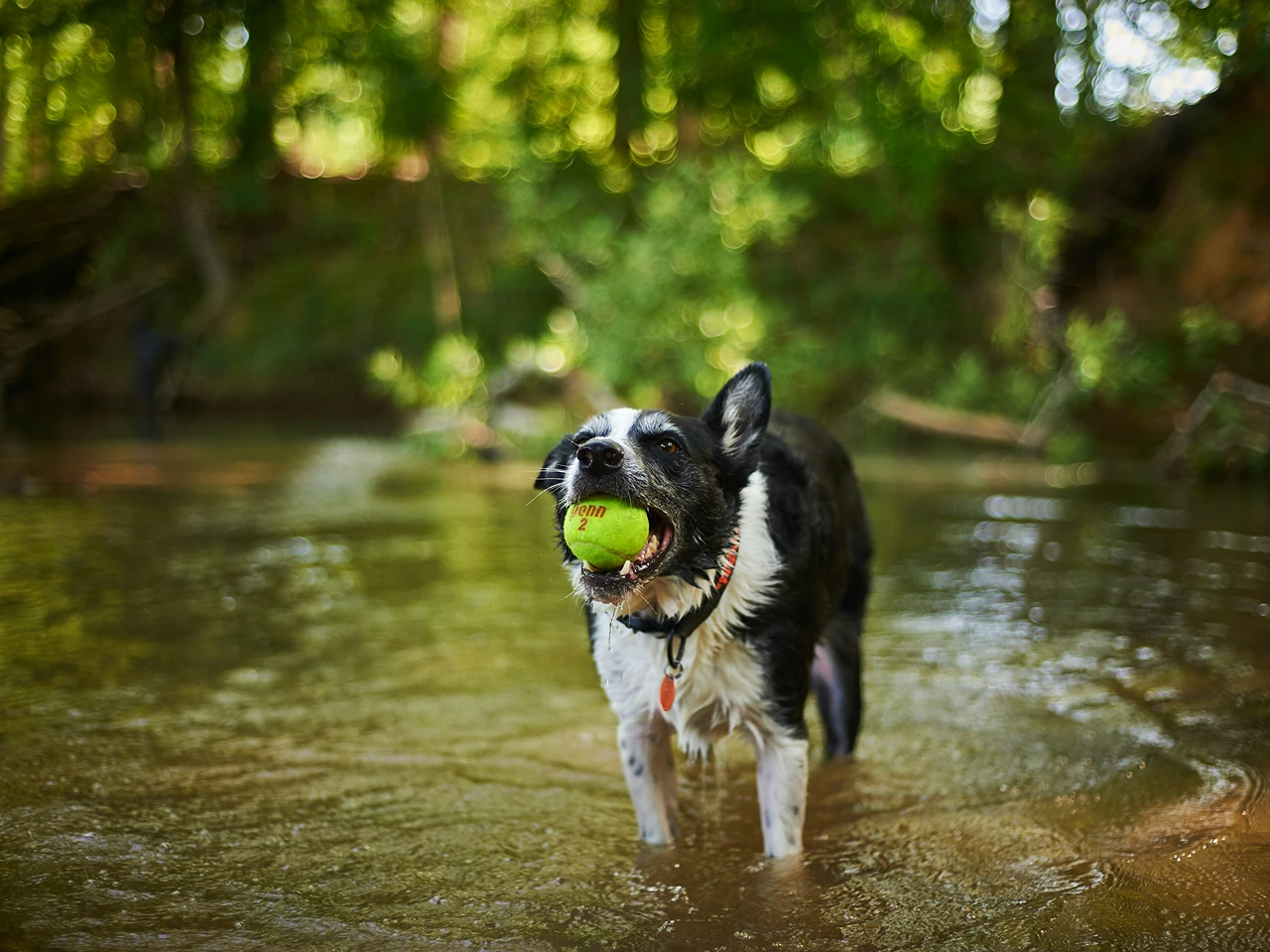
Dogs can catch Giardia in a few different ways, and knowing how it spreads is important for keeping them safe. The parasite is highly adaptable, so dogs can pick it up in everyday places.
- Contaminated water exposure: One of the most common causes is drinking from puddles, ponds, or other untreated water sources. These areas often contain Giardia cysts that can quickly infect a dog.
- Contact with infected animals: Direct dog to dog interaction or sharing living spaces with another animal that carries Giardia makes transmission much more likely. Even casual play can spread the parasite.
- Environmental risk factors: Places with high fecal contamination, such as kennels, shelters, or busy dog parks, create prime conditions for Giardia to spread. Dogs that frequent these environments face a higher risk of infection.
- Transmission methods: The parasite spreads when a dog accidentally ingests Giardia cysts, which may be present in contaminated soil, dog poop, or the stool of an infected animal.
- Incubation period: After exposure, symptoms often appear within a few days, but a dog may carry and spread the parasite before any visible signs of illness develop.
Giardia Symptoms in Dogs

Dogs with Giardia can show a wide range of signs of infection, which may vary from mild discomfort to serious health problems. While some dogs become noticeably ill, others may carry the parasite without obvious symptoms.
Loose stool and mucus in poop
The first red flags often include loose stool, mucus in poop, or persistent diarrhea in dogs. These symptoms may appear on and off, making them easy to overlook at first.
Frequent diarrhea in younger dogs
Younger dogs are particularly vulnerable. They often experience frequent diarrhea, poor weight gain, and slower development compared to healthy pups.
Vomiting
Some dogs with Giardia also vomit, adding to fluid and nutrient loss and increasing the chance of dehydration.
Lethargy and low energy
Because Giardia is an intestinal parasite that affects nutrient absorption, ongoing infection can lead to dehydration, nutrient loss, and reduced energy. Dogs may appear unusually tired, weak, or less playful than normal.
Severity levels
Puppies or dogs with compromised immune systems are at the highest risk of developing a long-lasting intestinal infection, whereas adult dogs may remain asymptomatic but still spread Giardia to others.
Chronic vs. acute cases
In chronic cases, intermittent diarrhea is common, with symptoms flaring up repeatedly over time. Acute cases, however, typically cause sudden, watery poop and more severe discomfort.
Recurrent bacterial infections
Recurrent diarrhea weakens the gut, leaving dogs prone to secondary bacterial infections that further compromise their digestive and immune health.
How Vets Diagnose Giardiasis in Dogs
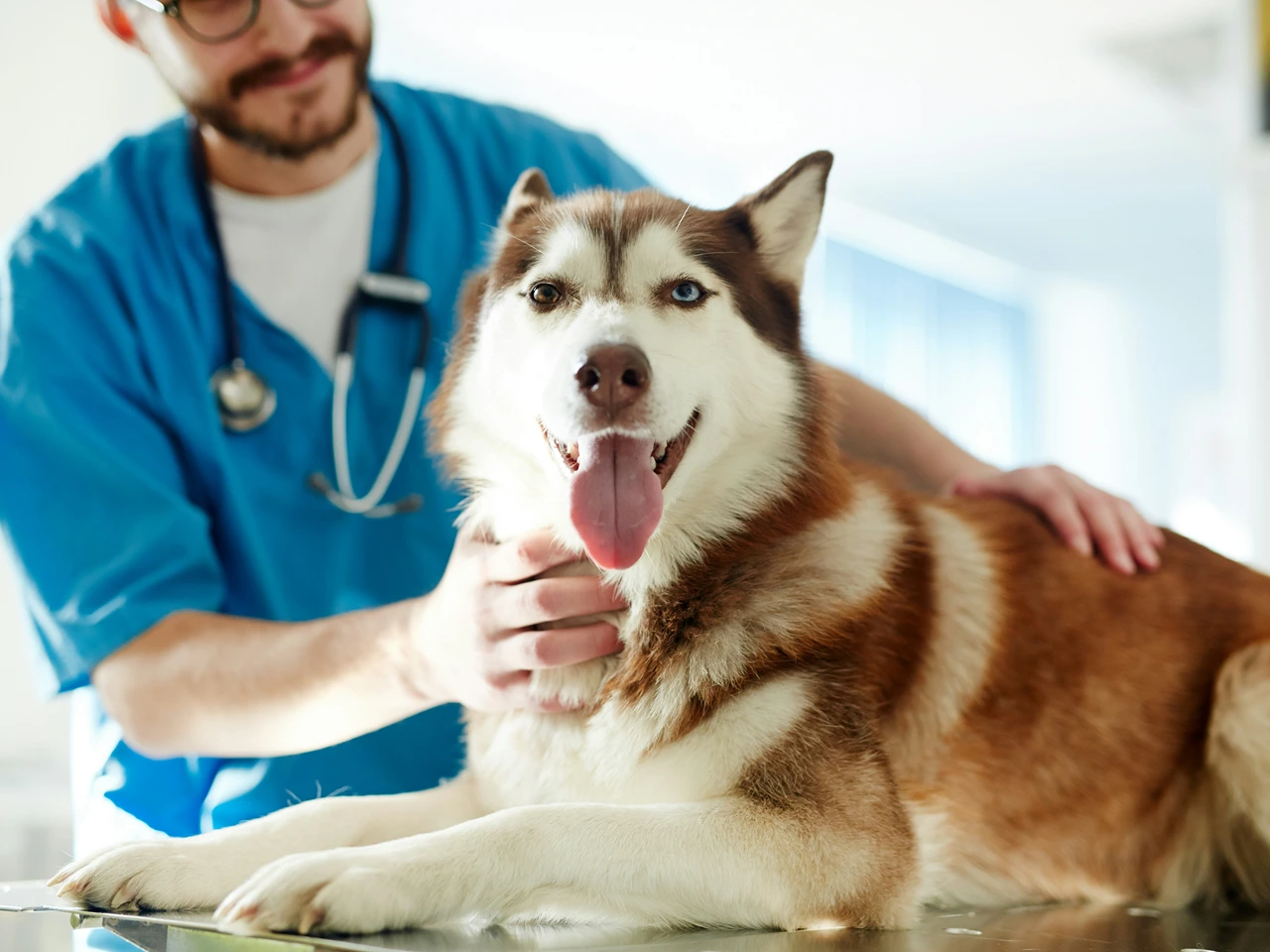
To diagnose Giardia in dogs, veterinarians use a combination of tests and careful sample collection to improve accuracy. Common methods include fecal flotation, ELISA antigen tests, and PCR, with antigen and PCR tests usually catching infections more reliably.
Because Giardia cysts are not always present in every stool sample, sample collection over several days is usually recommended. This approach helps reduce false negative risks, since the parasite sheds intermittently, and a single test may miss the infection.
During laboratory procedures, technicians carefully examine the stool for trophozoites, which are the active form of Giardia, and cysts, which represent the infectious stage. Taken together, these steps help vets confirm if a dog has the parasite and figure out the best way to treat it.
Treating Giardia in Dogs

The most common treatments are prescription drugs such as fenbendazole and metronidazole, which target the parasite and help clear the infection. In some cases, a combination of the two may be used for better effectiveness. Treating Giardia successfully means keeping your dog well-fed, hydrated, and maintaining strict hygiene to prevent reinfection.
To support treatment:
- Offer easily digestible, bland food to calm the gut—this is especially helpful for dogs dealing with diarrhea or sensitive stomachs.
- Because Giardia often causes fluid loss, maintaining proper water intake is essential. Extra fluids may be recommended to prevent dehydration and support faster healing.
- Reinfection is common if the environment is not sanitized. Disinfecting areas contaminated with feces, cleaning bedding, and washing food and water bowls help break the cycle of transmission.
- Since Giardia can be stubborn, dogs may require follow-up tests two to four weeks after treatment. To make sure the medication was effective and the infection was truly under control.
At the end of treatment, repeat testing confirms whether the parasite has been completely eliminated, giving peace of mind that your dog is free from Giardia.
Humans and Other Pets: Cross-Species Transmission
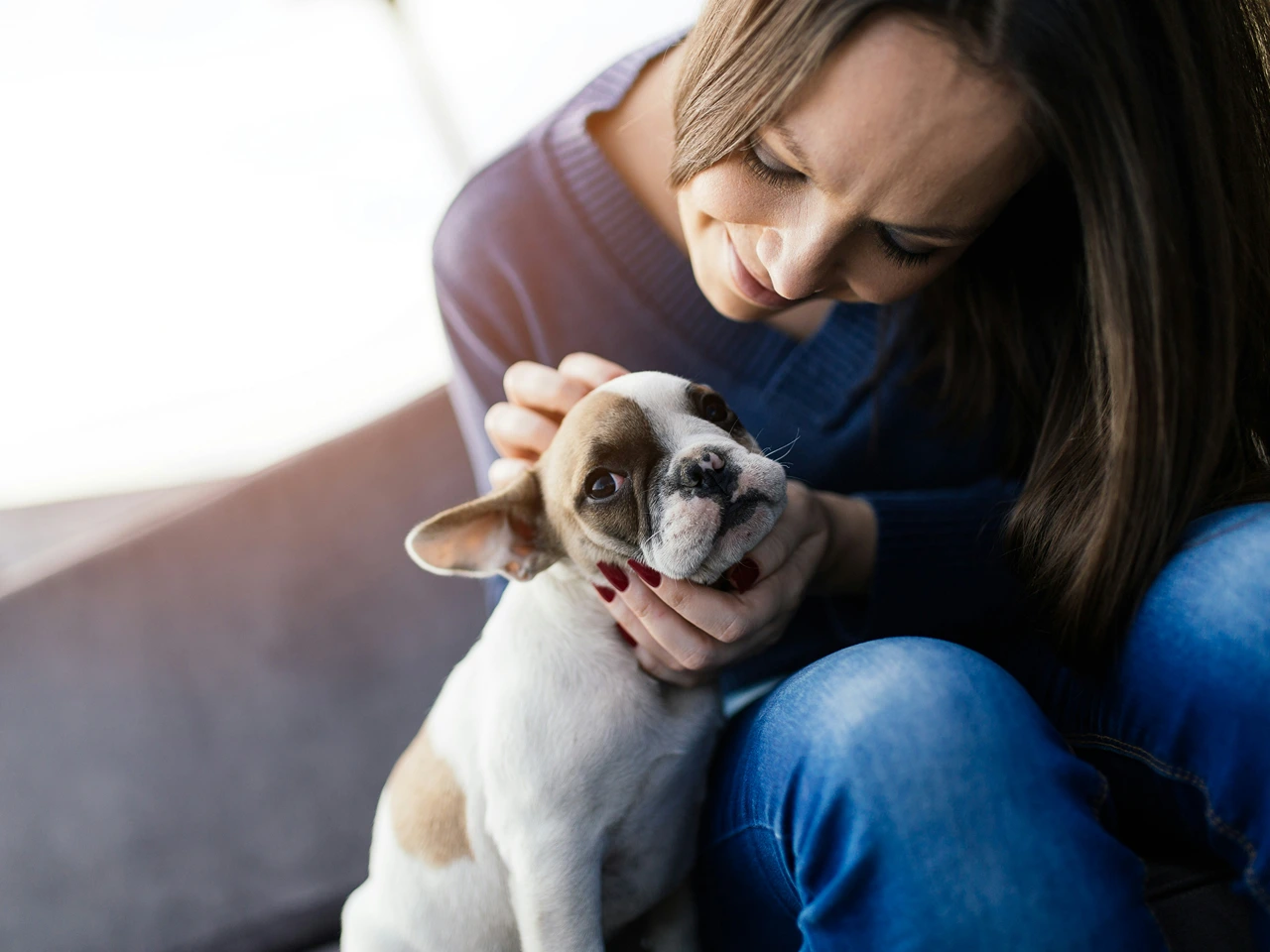
Giardia is a zoonotic parasite and has the ability to spread between humans and animals, which makes hygiene especially important. While not every strain crosses species, some do, which means that Giardia from dogs can occasionally infect people or even other pets in the household. This is why cleaning up after your dog and maintaining a sanitary environment are critical steps in prevention.
The risk is higher in vulnerable groups. Giardia from your dog can be particularly harmful to people with immunodeficiency, as well as young children and the elderly, since their immune systems are less capable of fighting off infection. For these at-risk dogs, it’s important to be extra careful, wash your hands, handle dog waste safely, and keep them away from contaminated water to help prevent the spread.
How to Prevent Your Dog From Getting Infected
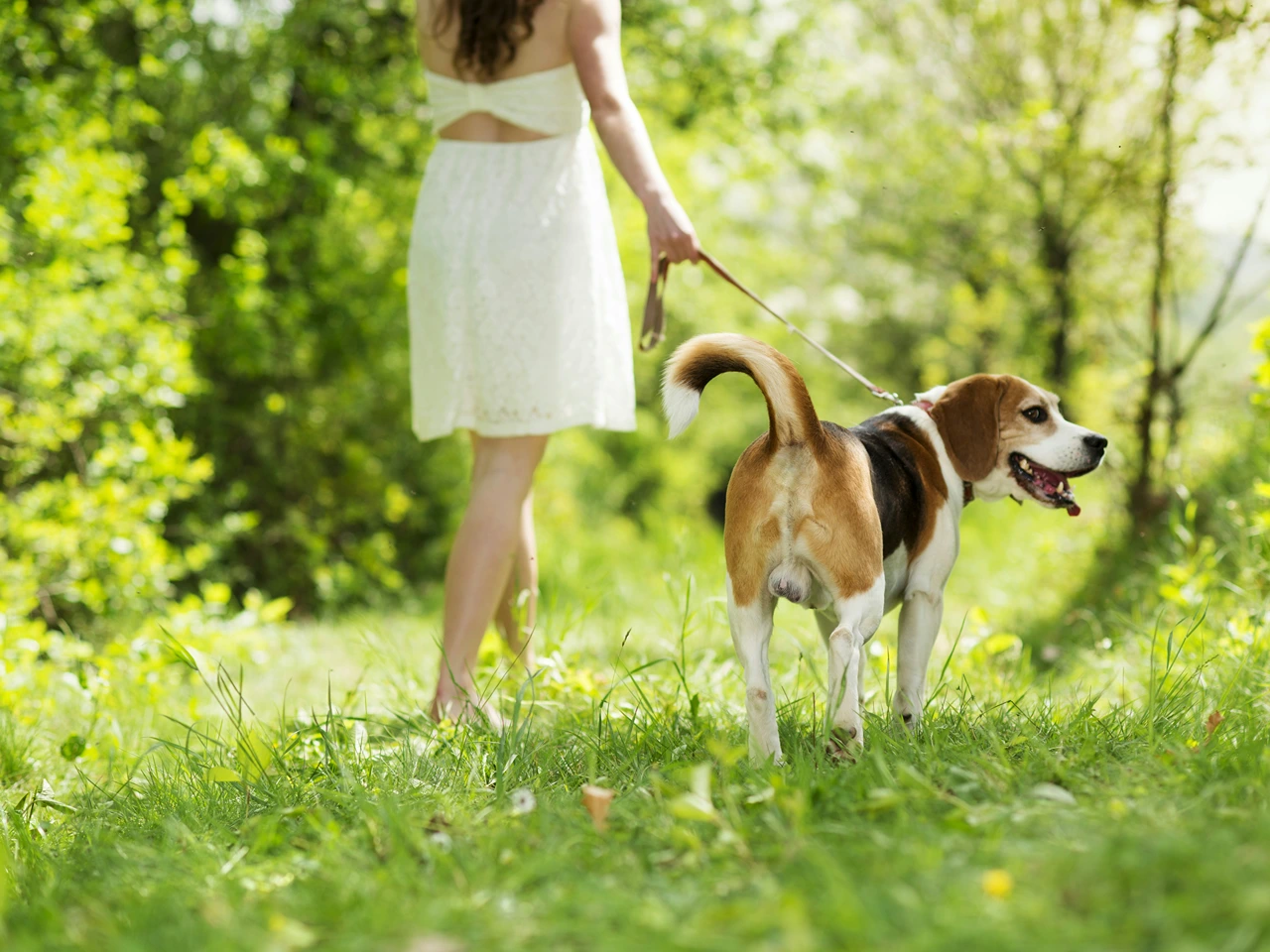
Prevention is always the best defence when it comes to Giardia infection, as stopping exposure is far easier than treating an infection in dogs after it develops. By sticking to good hygiene, safe habits, and regular vet checkups, you can greatly lower your dog’s risk.
- Make sure to pick up dog poop right away and disinfect shared areas to keep things clean and prevent the parasite from spreading. Always wash your hands after handling dog poop or cleaning feces to protect both yourself and your dog.
- Always give your dog clean drinking water, fresh, filtered, or boiled. Avoid puddles, ponds, or other spots that might be contaminated, since these are common ways dogs pick up Giardia.
- Stick to clean, well-maintained parks and avoid heavily soiled areas. This reduces the chance of contact with dogs already infected with Giardia.
- When travelling, be mindful of communal kennels, boarding facilities, or unfamiliar water sources where your dog may be exposed to parasites.
- Regular baths help remove cysts from your dog’s coat and paws. Keeping your dog clean also helps maintain overall intestinal hygiene.
- Routine veterinary check-ups are essential. Even if dogs don’t exhibit any symptoms, early screening can detect Giardia before it causes serious illness.
Final Thoughts
Giardia may be microscopic, but the trouble it causes for dogs and even their humans can feel much bigger. The reassuring part is that prevention is very doable with a few simple habits like giving clean water, keeping living spaces sanitary, and making vet visits a routine.
If your dog has ongoing diarrhea, vomiting, or seems unusually tired, don’t ignore it, calling your vet early can make a big difference. Being proactive protects both your dog and your family. Keep an eye on them, stick to consistent care, and when in doubt, check in with your vet.
Frequently Asked Questions
How can I prevent my dog from getting Giardia?
You can prevent Giardia with good hygiene, clean water, and regular vet care.
Cleanliness at home: Always remove poop promptly from your yard or living spaces to stop contamination and break the parasite cycle.
Safe hydration: Provide only fresh, clean water to prevent your dog from getting exposed to untreated puddles, ponds, or standing water.
Controlled environments: Avoid areas where dogs and cats frequently leave waste, since these environments often harbour cysts that infect dogs.
Routine hygiene: Regular baths and paw cleaning help reduce the chances of your dog contracting Giardia after outdoor play.
Veterinary care: Routine checkups ensure whether your dog has early signs of infection, making it easier to manage before it worsens.
How do dogs get Giardia from dogs or other animals?
Dogs usually catch Giardia through water, poop, or direct contact with infected pets.
Direct contact: Casual play or grooming with an infected companion animal parasite can easily pass Giardia between pets.
Shared environments: Kennels, shelters, or dog parks are hotspots where dogs can get exposed to contaminated feces or soil.
Waterborne risk: A dog can become infected with Giardia by drinking contaminated water from outdoor sources.
Cross-species spread: Though not every strain of Giardia crosses species, some can pass between animals and people in the same household.
Environmental persistence: Giardia has two forms, and the cyst stage can survive in soil or on surfaces for weeks, increasing exposure risk.
What is the most common symptom of Giardia in dogs?
The main symptom of Giardia is diarrhea, but other signs may also appear.
Digestive upset: The most frequent symptom of Giardia is persistent diarrhea that may contain mucus or appear watery.
Poor growth in young dogs: Puppies often show stunted growth and poor weight gain when the infection is caused by Giardia.
Vomiting episodes: When a dog has Giardia, vomiting may occur alongside diarrhea, leading to dehydration.
Low energy levels: The severity of the infection often determines whether a dog appears weak, lethargic, or unusually tired.
Recurrent illness: Chronic cases can leave dogs prone to secondary infections, especially if the dog is diagnosed late.
What should I do if my dog is diagnosed with giardiasis?
Follow your vet’s guidance, keep things clean, and monitor your dog closely.
Follow treatment plans: If your dog is diagnosed with giardiasis, veterinarians often prescribe metronidazole or fenbendazole.
Hydration support: Since the illness is caused by Giardia and leads to fluid loss, keeping your dog hydrated is critical.
Strict sanitation: Make sure to wash your dog’s bedding, bowls, and toys to prevent the parasite from spreading to humans or other pets in your home.
Monitor stool changes: Keep track of whether your dog produces normal stool or Giardia poop during treatment.
Retesting: Follow-up exams confirm if the infection has cleared, ensuring peace of mind for the average dog owner.
What should I know about Giardia as a pet owner?
Giardia is common, but with awareness and prevention, it’s manageable.
Parasite type: Giardia is a single-celled parasite, making it one of the most common intestinal issues in pets.
Wide impact: Dogs can get infected, but cats and even humans may also become infected with Giardia under certain conditions.
Strain concerns: Not every strain of Giardia is zoonotic, but some can affect both animals and people, so caution is always needed.
Household safety: Taking steps to prevent your dog from contracting Giardia also lowers the risk for family members and other pets.
Awareness matters: Knowing that Giardia is a companion animal parasite helps the average dog owner stay proactive and protect household health.




